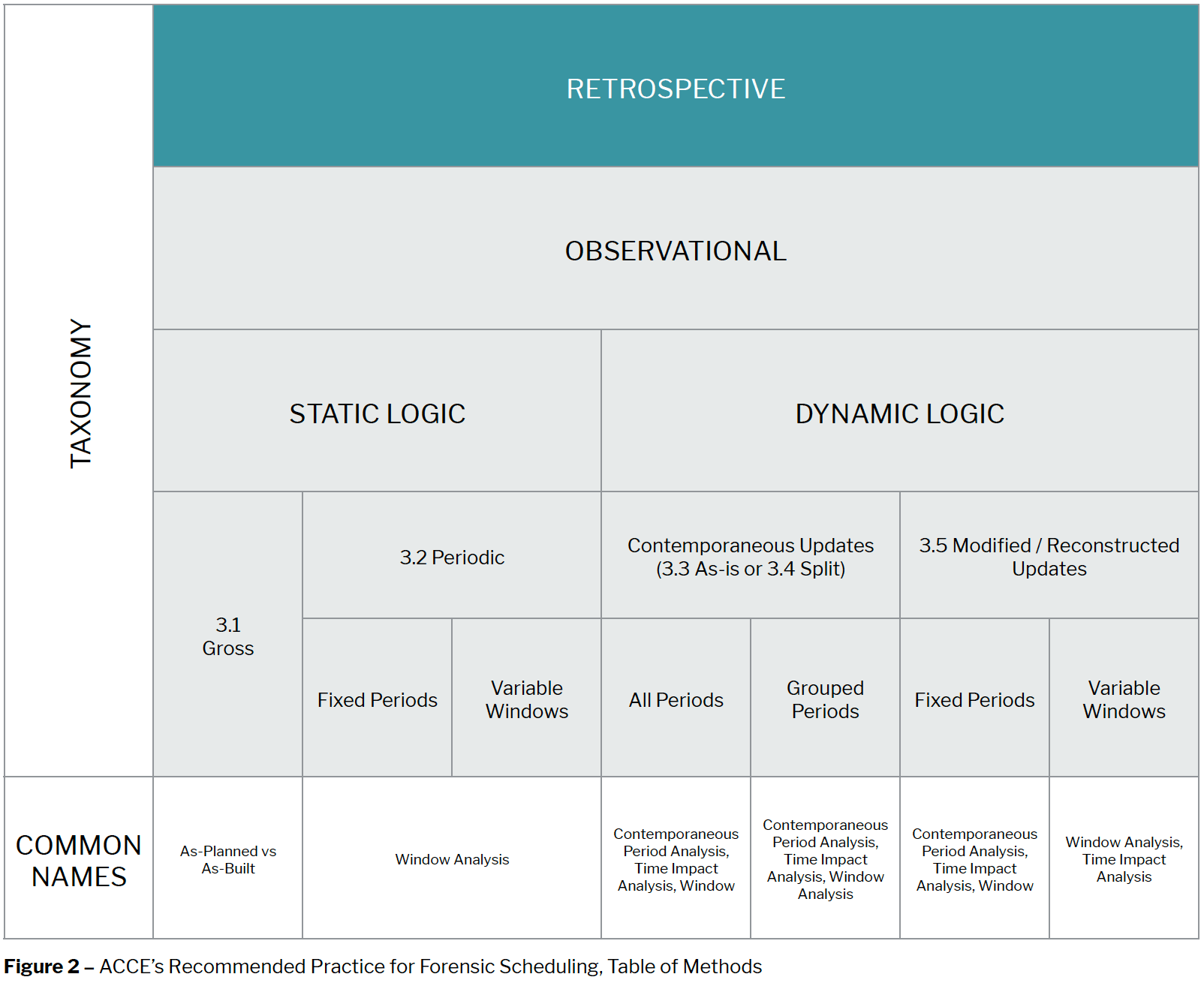Delay analysis, a valuable tool or ‘black magic’?
30th November 2017
Is delay analysis a valuable tool to resolve disputes or overly complex ‘black magic’?
Delay analysis has become an important skill, typically driven by the damages incurred by one of the participants in a project. This article discusses whether a properly prepared delay analysis is a valuable tool to resolve disputes or is so complex that it borders on ‘black magic’, using props and sleight of hand (via schedules, projections and the manipulation of facts) to make things appear to be real when they are not.
Consider the optical illusions in the illustration in Figure 1. The way we present and consider information can distort the message it conveys and the way it is interpreted. If we are not careful we may come to the wrong conclusions.

Delays in construction are common and have been encountered for as long as mankind has been constructing projects. The methods we use to manage and record time are not new either. Gannt charts are 100 years old, Critical Path Method (CPM) is over 50 years old and mainstream scheduling software has been around for over 25 years. Given this familiarity and experience, we may expect that delay analysis would be an established, agreed and simple process, but often it is not.
Why not? The principal reason is that circumstances differ; one size does not fit all. In the same way, apparently, similar projects require different designs, means, and methods, different circumstances require different approaches to delay analysis. The information and issues differ between projects.

Different management teams and supply chains plan, operate, interact and keep records in different ways. Some projects may use a regularly updated CPM software schedule and others may simply use planning or bar charts. Contract terms differ and the nature and timing of events differ. All of these factors and others can influence the most appropriate way to do an analysis.
This has led to many different methods for assessing delay. There are several names of methods, which have become quite familiar with the subject of delay analysis, such as Impacted As-Planned, As-Planned vs As-Built, Time Impact Analysis, Windows Analysis, and Collapsed As-Built. However, there are other methods too and there are variations in how to apply any of them. Take, for example, the table of methods set out in the Association for the Advancement of Cost Engineering International (AACEI) Recommended Practice for Forensic Scheduling, see extract in Figure 2, above.
The AACEI identify nine main methods of conducting a retrospective schedule analysis, which they have numbered 3.1 through 3.9. Those nine methods are then broken in to further sub-methods (such as fixed periods, stepped insertion or global extraction). This results in fourteen variations for analyzing delay. However, even this is not an exhaustive list and there are other methods to use to analyze delay. There are many other texts and guidelines on the subject, some of which include methods that AACEI does not include.
Due to the number of methods and variations, there is the potential for manipulation by the analyst. Different methods can give different answers to the same question and certain methods can be more favorable to one party over the other.
There is potential to distort the results, create or mask delays or distort the critical path. Some methods are essentially hypothetical scenarios, some analyses are no more than superficial wrappers to a global claim and some of the complex methods can be subject to smoke and mirrors in various ways.
The AACEI table refers to different methods by the same name, which has the potential for confusion or misinterpretation. It is likely that most Construction Managers have heard of Time Impact Analysis (or TIA). The version of TIA familiar to most would come under AACEI’s method 3.7 but the table shows us that Time Impact Analysis is a name for eight other techniques.
So be cautious of accepting a method of delay analysis purely on its name or what it purports to be, and be careful of accepting the results until you understand how it was undertaken. It is advisable that you understand and examine the analysis – what it is and how it was undertaken. You may find a ‘so-called’ TIA is actually an Impacted As-Planned or an As-Planned vs As-Built, and you may find the analysis is attempting to play tricks by ignoring certain events or information or manipulating the data in some way.
Clearly, there are many potential ways approach a delay analysis. There is still no full consensus as to which method is best. Nor is there a full consensus on the correct way to apply a given method. Is this symptomatic of a ‘dark art’ and ‘black magic’.
It is tempting to conclude that we should, but we come back to the fact that no one size fits all in delay analysis. Generally, it is advisable to apply a method that is established and recognized but the choice of method should be a question of what is appropriate under the circumstances. We should ask which method would be accurate and best reflect what actually happened.
Moreover, we need to consider which method is appropriate in light of what information, constraints and contractual terms may be in place. When analyzing critical delay the focus should always be on identifying the link between cause (the delayed activity) and effect (delay to completion of the project). Analyses that demonstrate cause but not affect, or effect but not cause, are only half the answer. Unfortunately, such analyses are quite common.
The element of delay analysis that is most susceptible to ‘black magic’ is the CPM schedule with relatively little effort.
Technology has allowed the creation of complex CPM schedules with relatively little effort. Large projects may contain thousands and even tens of thousands of activities, often with three times as many logic links. It used to be the case that making changes to a schedule required a great deal of thought and significant effort and so the change was considered carefully, but now extensive changes can be made quite rapidly in subtle and non-transparent ways and potentially with little thought.
It is not unusual for updates on large schedules to contain hundreds or thousands of changes. In the face of such extensive change month on month, it becomes very difficult to communicate, understand and audit what is happening in the schedules. For the purposes of delay analysis, we should be cautious as to whether the changes reflect the reality of the facts on the ground. Certain fundamental software settings, often mandated in the scheduling specification, can affect and potentially distort how the plan depicts. Lags and leads, preferential logic, calendars, constraints, progress percentage settings and retained logic settings all have the potential to lead to distortion or misinterpretation of the plan and the critical path.
However, the schedules are often the best record of the project as a whole and the best representation of how activities are interacting and influencing the critical path. Therefore, unless it is clear that the schedules do not reflect the facts on the ground, or are otherwise misleading, then generally they should be the preferred starting point for an analysis of delay.
Different [delay analysis] methods can give different answers to the same question and certain methods can be more favorable to one party over the other. There is potential to distort the results, create or mask delays or distort the critical path. Some methods are essentially hypothetical scenarios, some analyses are no more than superficial wrappers to a global claim and some of the complex methods can be subject to smoke and mirrors in various ways.
Phil Urwin & Rocco R. Vespe
It is not only the CPM schedule calls for caution. Other sources of data may also be inaccurate or manipulated. It is important to confirm and crosscheck the accuracy of all source data used in the analysis. Payment progress or material quantity progress may be at odds with time-related progress depending on circumstances so when analyzing issues of time and criticality it is important to make sure we are comparing apples to apples.
We should also be careful when considering the causes of delays; competing causes may be an influence. There may be inefficiencies in workforce, materials, out of sequence working or poor management and control. There may be concurrent delays, issues of pacing or changes and events that caused work to complete quicker not later than anticipated.
‘Ultimately, no method of delay analysis is universally better or more accepted than any other. It is entirely dependent on circumstances. But in all cases the analysis should reconcile with the contemporaneous facts as recorded in the project records.’
Ultimately, no method of delay analysis is universally better or more accepted than any other. It is entirely dependent on circumstances. Nevertheless, in all cases, the analysis should reconcile with the contemporaneous facts as recorded in the project records. It is essential to review and consider the project records and where possible interview the project participants. This will avoid a CPM schedule analysis from being lost in the software complexity and provide a ‘common sense’ check to the results. It will also assist in communicating and evidencing the causes of delay.
Ideally, delay analysis should occur during the course of the project. This will reduce the potential for disputes, reduce complexity and allow the project team to focus on getting the project back on track. When analyzing delay contemporaneously it is important to identify, analyze and agree on the effect of delays as close as possible to when they happen. Treat time like money and wherever possible resolve the time compensation before the work completes and in doing so, try to be fair, reasonable and pragmatic as to the needs of the project.
In reality, reaching agreement on time is often problematic and there will be differing opinions as to what was delayed, why and if it was critical to completion. It is not uncommon for the owner and contractor to reserve rights on time and see what the actual effects are at the end of the project.
Unfortunately, this can often lead to dispute about time and an after the fact delay analysis (retrospective analysis) will be required. When conducting a retrospective analysis, we should consider and account for all relevant delays in the analysis, both our own and those of others. Remember the method is important because methods can influence and distort the results. If the contract specifies a method, we should apply that method and only deviate if it is evident that the results are unreliable or misleading.
We should also be aware that if the dispute escalates to legal proceedings then the method might need to be more comprehensive than for a negotiated resolution and some methods are favored or disfavored under the laws of different countries or states. On the other hand, we should be cautious of unnecessarily complex analysis, avoid ‘smoke and mirrors’ and focus on establishing cause and effect in the most straightforward and reliable way possible.
Simpler is better but be careful not to oversimplify – the results must be reliable and robust. In most cases, we should focus on actual delay not hypothetical delay and we should always look to the records to resolve any delay analysis with the as-built facts. Whichever method we apply, we must maintain reality and common sense.
About the authors

Phil Urwin is a Director at HKA and an expert in the field of delay. He is a contractor, trained planner, and scheduler, with 20 years of experience in construction and engineering, including 10 years in trades and contracting. Phil specialises in the field of delay and he has contributed to project controls and dispute resolution on some of the world’s most complex, high value and high profile projects.
Rocco R. Vespe is a Principal at HKA. He has more than 40 years of experience in the construction industry including 20 years as a general and concrete contractor followed by more than 20 years as a claims consultant and testifying expert on project management, construction management, cost estimating, schedule and delay analysis, dispute resolution, claims evaluation, delay and damages, contractor and construction manager
This article was first published in the Spring 2017 edition of the Construction Management Association of America’s Journal of Professional CM/PM Practice.
This publication presents the views, thoughts or opinions of the author and not necessarily those of HKA. Whilst we take every care to ensure the accuracy of this information at the time of publication, the content is not intended to deal with all aspects of the subject referred to, should not be relied upon and does not constitute advice of any kind. This publication is protected by copyright © 2024 HKA Global Ltd.


